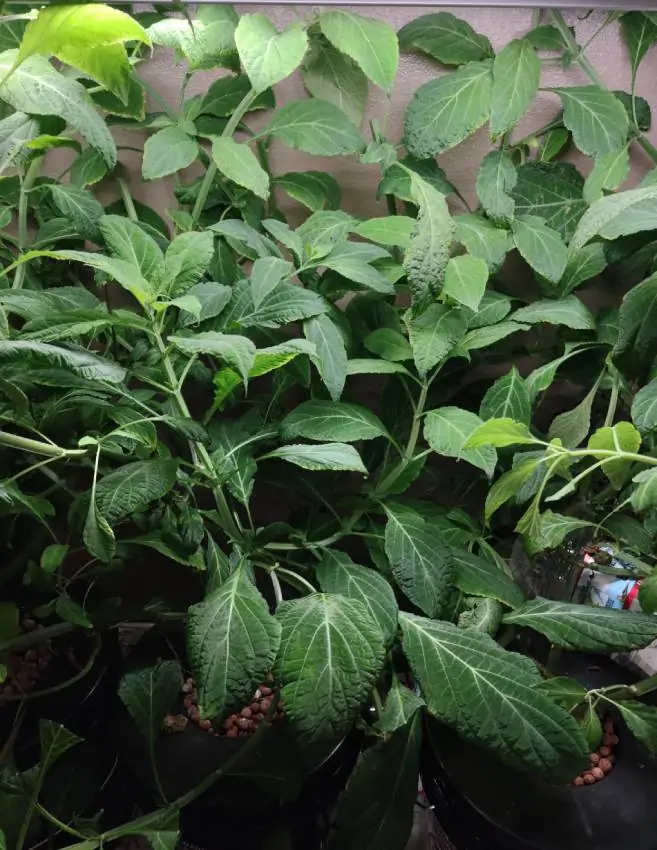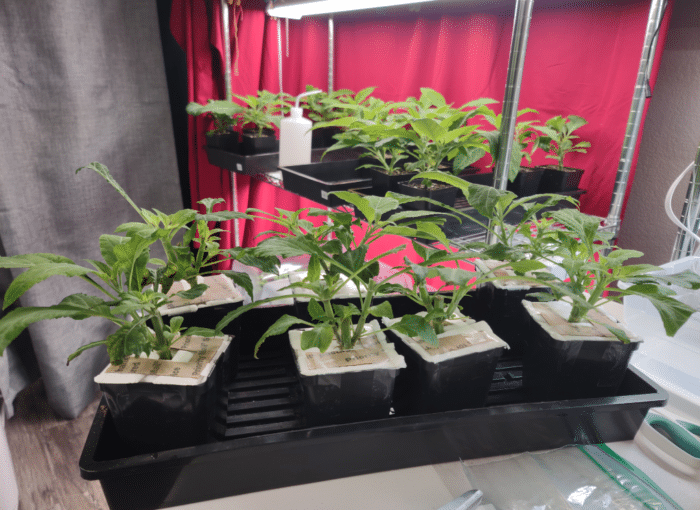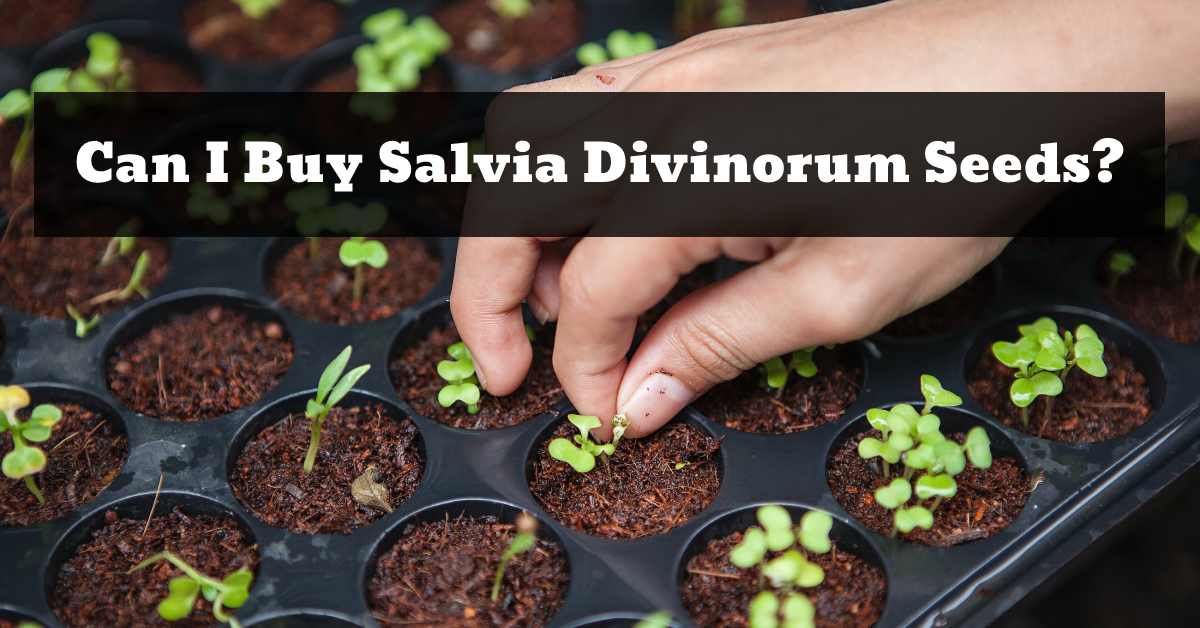If you want to see at a unique psychedelic of all times, then have a look at Salvia divinorum. You must have seen salvia somewhere, as there are about 700 species of this herb. It belongs to the mint family and is commonly used as a decorative plant due to its aesthetically pleasing flowers. Salvia divinorum is one such species whose leaves are used as a hallucinogen as it contains Salvinorin A, which is responsible for causing various psychological effects.
What is Salvia Divinorum?
Salvia Divinorum is a plant that grows in a semi-tropical perennial. It grows only after a year if it is not exposed to extremely cold temperatures. Talking about its appearance, salvia is a large plant having big green leaves. It has a very thick stem, which is hollow and green in color. It can grow very tall under favorable conditions.

Salvia divinorum, also known as salvia, is an herb that belongs to the mint family. This plant is native to central and south America and southern Mexico. Salvia has been used for centuries in various traditional ceremonies. Nowadays, it is commonly used as a hallucinogen as it has hallucinogenic effects. Salvinorin A is the main active ingredient in salvia, which is responsible for its psychoactive effects. It also causes dizziness, visual disturbances, and hallucination.
How to Use Salvia?
Salvia is commonly used for recreational purposes. People mostly like to have it rolled in joints or cigarettes. However, it can be consumed in several other ways as well. Here is how you can use salvia.
- Directly chewing the fresh leaves (fresh salvia leaves are less potent)
- Taking it sublingually by placing the drops of tincture under your tongue.
- Making the extract out of salvia and mixing it into beverages or vaporizers to get the desired effects
- Smoking salvia via a bong, vape, joint, or pipe.
Is it Safe for Consumption?
The studies conducted on salvia are very limited, which is why we cannot say with certainty what effects it has on a person. However, it is generally considered safe if ingested in appropriate amounts. No harmful side effects or risks are observed as far as its recreational use is concerned.
However, you should still be cautious and avoid going in public places or on the road with a vehicle after consuming salvia. As it can cause hallucinations and dizziness, there is a risk of getting into an accident.
Uses and Effects of Salvia Divinorum
Salvia is believed to be effective against a number of diseases and health conditions. However, as mentioned before, the research on salvia is very limited, and there is insufficient evidence to prove the effectiveness of salvia.
Salvia is known to help with the following health conditions:
- Bloating
- Headache
- Depression
- Diarrhea
- Rheumatism
- Urine regulation and bowel movements
We need more evidence to prove if salvia actually helps with any of these conditions.
Why does Salvia Plant Rarely Produce Seeds?
Salvia plants almost never produce viable seeds. This is why it is never recommended to grow your salvia plant from seeds. Even if you put all your efforts into propagating a salvia flower using seeds, you will have disappointing results. Salvia plant doesn’t have the natural tendency to grow into a flower using a seed. The seeds of salvia are highly unreliable.
How does the Salvia Divinorum Plant Flowers?
Salvia flowers can be easily grown by using cuttings. Nevertheless, any person having no gardening experience before can easily grow salvia flowers to perfection for the very first time. Even the salvia plants grow by natural cloning in their native land. The wilds of salvia grow so big that the branches eventually fall off due to their increased weight. These fallen branches root into the surroundings and eventually grow into new flowers. The cycle repeats, and this is how salvia continues to grow.
The weak stalks of salvia cause them to fall over when they grow up to three feet. This is why you need to be careful when growing them at home. Support the stalks with a straight log to allow them to go straight. Otherwise, they will fall off as they do in the natural environment. If you cannot provide it with support, it is better to cut the plant regularly.
Cultivating a Salvia Plant using Clones
Getting salvia clones is no big deal. If you look around, you may find some friends who already grow salvia. You can simply ask them for the cuttings. Nevertheless, salvia plant clones are available on our website as well. You can get your hands on the most potent variety of salvia by looking through our store.
So get salvia cutting from our website and prepare everything to start rooting salvia. You don’t need to do much hassle for the fertilizers and nutrients in the beginning as salvia flowers can easily grow without these at this stage. If you are growing it indoors, make sure you keep a separate container for each cutting.

You should keep the surroundings humid for salvia as it comes from a semi-tropical environment. So, if you wish to see salvia grow quickly, keeping them in a humid environment and controlled conditions is better. Nevertheless, the plant grows pretty well in a no humid environment as well as they are highly adapting to the conditions they are introduced to.
Flowering Process of Salvia Plant
If kept in favorable conditions, you will see the roots emerging from the salvia flower after about a few weeks. This is the point when you need to shift the cuttings into the soil. Just get some regular soil from a nearby nursery and put your salvia flowers on it. Make sure the soil you get is not much heavier; rather, it should be rich in humus and has good drainage.
It is also important to note that the roots of salvia plants need more space to grow. Therefore, it is better to put them in a large pot from the very beginning. This will give the roots more space to grow better.
Once you are done shifting salvia flowers to a pot, you need to maintain the surrounding conditions for it to optimize its growth. Here is how you should do that:
- Sunlight
Salvia plants don’t need strong sunlight. They will not have optimal growth in intense sunlight. However, they still require some direct sunlight every day. For that, you can place it in moderate sunlight every day for a few hours. The rest of the time, they should be kept in filtered light.
- Temperature
Temperature is crucial for the growth of salvia plants, especially when they are in their rooting stage. With their semi-tropical origin, salvia plants remain well between 15-27 degree Celsius. Going out from this range is not suitable for plant growth, but they still manage to grow slowly. Temperature going anywhere near freezing can be dangerous for salvia. Extremely cold weather can cause the salvia flowers to become black, and they ultimately die. But if the roots of salvia stay safe from getting frozen, the plant can again bloom. Leaves turning red is an indication that the temperature is not suitable for plant growth and should be instantly reduced.
- Humidity
You need to maintain humidity for the salvia plant right from its rooting stage. Salvia should be kept in an environment with more than 50% humidity for optimal growth. But since they are highly adaptable, they can survive less than 50 percent humidity as well.
Take all the measures to trap the humidity inside. One good way is to keep the plant moist all the time and use a container to cover the flowers. This will trap the moisture inside and prevent it from escaping. A plastic bag is also a good option, but it should be transparent. The covering should allow the light to pass through it.
- Water
Water is the most important element in salvia’s growth. The soil in which salvia is grown should be kept moist all the time. You need to keep the soil from getting dry. However, you need to maintain a balance and avoid over-watering the plant.
Salvia is a highly resistant plant. Pests and diseases are typically not a big issue for salvia, but the plant may encounter a certain disease. This can include spider mites, white flies, root rot, powdery mildew, aphids, and botrytis blight.
In Conclusion
Salvia is a highly adaptable plant having its origin in semi-tropical regions. However, it can easily adapt and grow outside its optimal growth range. It is almost impossible to grow salvia with seeds as they are highly unreliable, but they can easily be grown using a clone. You can have a look at our website to get the best salvia clones.
When it comes to salvia legality, it is federally legal in the US. However, there is no medically proven use of salvia. It is typically used for recreational purposes only. It commonly has psychic effects on people and causes rapid onset of intense hallucinations on consumption.



